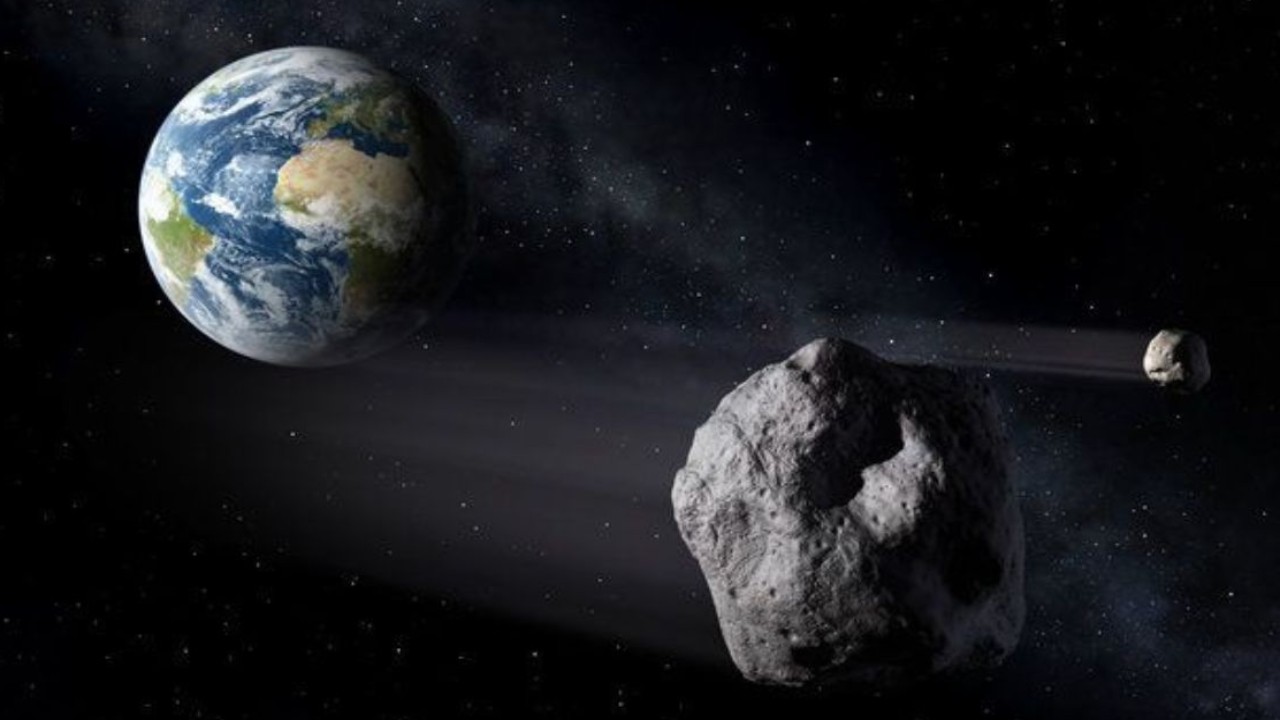As NASA experts anxiously monitor the cosmos, their attention is drawn to a celestial event of great significance: the impending approach of a colossal asteroid, designated 2022 TN1. This celestial behemoth, measuring an astounding 1029 feet in diameter, is hurtling towards Earth, poised to make an alarmingly close pass on April 30, 2024.
The asteroid's trajectory will bring it within a mere 7,130,461 kilometers of Earth, a distance less than 19 times that of the moon. Its astonishing velocity of 63,828 kilometers per hour has sent shivers down the spines of scientists, who are understandably on high alert.
Yet, despite the asteroid's close encounter, NASA assures us that there is no imminent danger of an impact. 2022 TN1 is expected to safely pass by our planet, serving as a stark reminder of the potential risks lurking within the vast expanse of space.
The majority of asteroids in our solar system reside within the main belt, situated between Mars and Jupiter. However, 2022 TN1 defies this norm, possessing an eccentric orbit that transforms it into a cosmic nomad, periodically venturing dangerously close to Earth.
Should this colossal rock collide with our planet, the consequences would be catastrophic. Statistical data reveals that Earth endures an impact from an asteroid of comparable size roughly every 166,000 years, unleashing devastation upon the planet.
A fiery inferno, stretching 15 kilometers wide, would incinerate approximately 13.5 million individuals. If the asteroid's trajectory intersected a densely populated region, the death toll from severe burns would exceed 9 million. Trees within a radius of 130 kilometers would ignite instantaneously.
The impact would generate a catastrophic shockwave, registering an earth-shattering 241 decibels. Within a 100-kilometer radius, this destructive force would obliterate all structures, claiming the lives of 10 million people. Furthermore, a colossal earthquake, measuring a staggering 7.2 on the Richter scale, would reverberate through the land, its tremors perceptible up to 240 kilometers away.
Recognizing the dire consequences of an asteroid impact, scientists are relentlessly pursuing strategies to avert such a doomsday scenario. NASA leads the charge in developing cutting-edge technologies, including nuclear explosions, ion-beam shepherds, kinetic impactors, and gravity tractors, all designed to deflect asteroids.
Although the probability of an asteroid impact may be remote, events like the impending close approach of 2022 TN1 serve as sobering reminders of the pressing need for planetary defense initiatives. These measures safeguard Earth from extraterrestrial threats, ensuring the well-being of our planet and the inhabitants who call it home.




